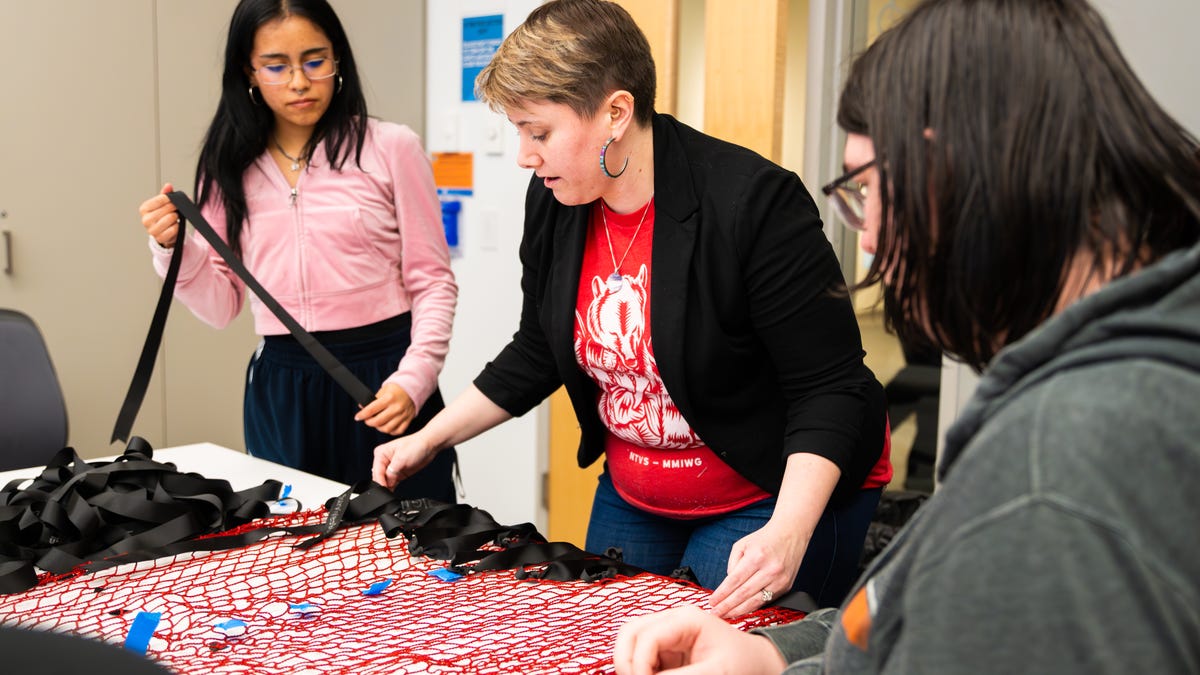
For art curator Tess Lukey, Worcester has always been a “beloved place,” whether during her childhood in Westborough or now that she lives in a neighboring town.
“There are a lot of murals on the sides of buildings that are really interesting to me, and it’s as much a part of who I am as it is a city,” Lukey said. “I still get my hair cut in Worcester, my favorite Vietnamese restaurant is in Worcester. I’m in Worcester all the time.”
Lukey is bringing those Worcester roots, as well as her Wampanoag heritage, to a worldwide audience this summer as curator of the first Boston Public Art Triennial, bringing art installations to public places throughout Massachusetts’ largest city in hopes of building a connection between everyday people and the visual arts.
‘In the literal public’
“A curator makes decisions about the objects. They select them, they research them, they make sure things are properly packaged if they’re being moved, and then they present all of this to the community,” Lukey said. “In public art, we’re doing all that, but in the literal public — out in the open air where visitors and the community can come be part of it.”
Lukey is a citizen of the Wampanoag Tribe of Gay Head Aquinnah, a Native community that has lived on the island most people know as Martha’s Vineyard for thousands of years, and she particularly wanted to make sure Native art and culture were a part of the Public Art Triennial, working with the North American Indian Center of Boston as part of the planning process.
“It’s driven by my own perspective as an Indigenous woman, and also by the need and desire as a community to be represented in that space,” Lukey said. “For some of the artists, it’s a lot of on-the-ground relationship building and continuing to show an interest in uplifting the urban reservation community of Native people in Boston.”
Lukey said one art piece, “Transmutation” by Native artist Cannupa Hanska Luger, a memorial to the bison that white American settlers hunted to near-extinction in the late 1800s, became a collaboration with students at UMass Boston, where it is located.
The piece features ribbons that bear messages written by students “honoring the beings and the people and looking towards an Indigenous future,” and Lukey said the result was powerful to see.
“Each one of those ribbons has a message written on it by the students, a message of positivity and hope, and there are thousands of ribbons tied to this work that were tied onto that fabric,” Lukey said.
‘The reception is super positive’
Though this year’s triennial, as the inaugural event, is focused mainly on Boston and the area surrounding it, Lukey hopes to bring in artists from all across Massachusetts and New England in future years.
As Lukey sees it, with more and more cuts to and attacks on the arts in recent years, public art has become all the more important — and Massachusetts’ towns, cities and cultural organizations have responded by supporting it.
“I think the more that arts funding gets cut across the board, Massachusetts doubles down every time,” Lukey said. “The more we talk about it, the more we are going to see it everywhere. You see people interested in doing murals. You see people interested in doing public sculpture. You see people interested in working with the community and representing it.”
In the weeks leading up to the Boston Public Art Triennial’s May 22 opening, neighborhoods that are hosting art installations are already showing the same kind of interest in return.
“As the installation is going in, that’s one of the things people find so fascinating,” Lukey said. “We’ve had many people come up to us and ask who we are, what we’re doing, what’s going in. So far, the reception is super positive.”
While the art exhibition, which will run through Oct. 31, has several pieces celebrating Native past and present, you don’t have to drive the hour from Worcester to Boston during the triennial to see Native culture everywhere you look.
Whether it’s the yearly Nipmuc powwow in Worcester County, Wampanoag place names in southeastern Massachusetts and on the Cape and Islands, or the clam chowder that New Englanders hold dear, the culture and people that have been here for thousands of years remain.
“The street names, the town names, the names of lakes, the names of rivers — there are numbers of names and words all across Massachusetts that come from our language,” Lukey said. “You are, in some way, very much surrounded by Native community.”
To learn more about the Boston Public Art Triennial, visit thetriennial.org.
